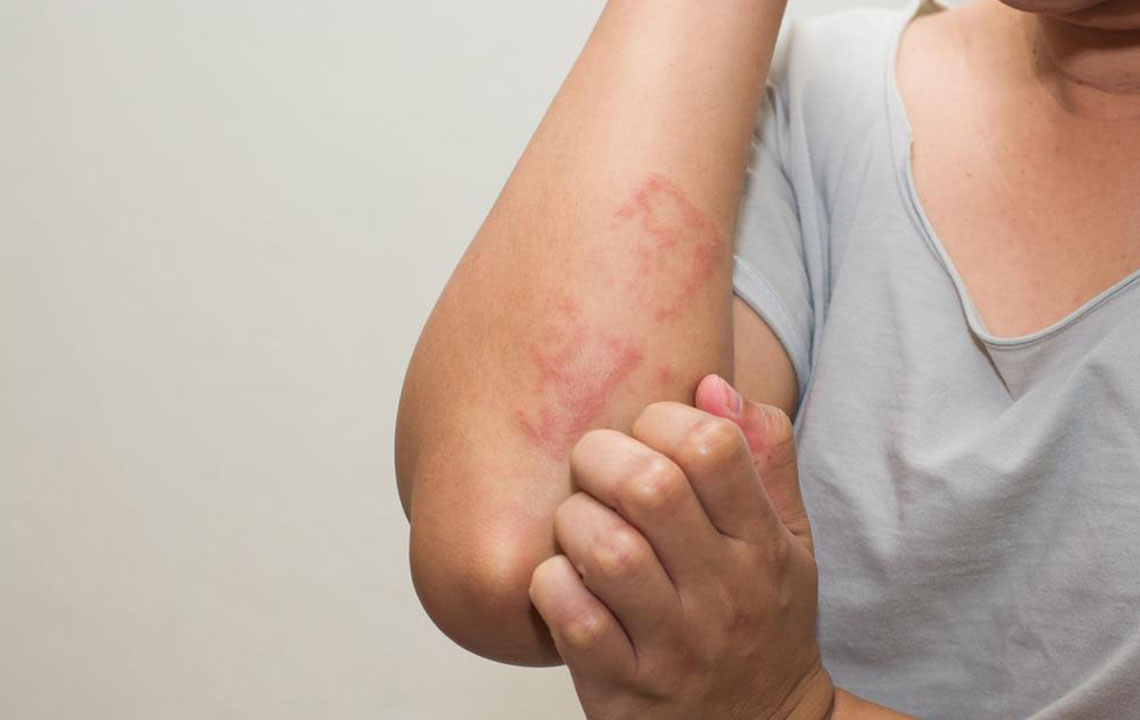Treatment Options for Eczema You Should Know About

Eczema is usually referred to atopic dermatitis, which one of the most common diseases across the country. It is a condition in which your skin becomes inflamed, itchy, cracked, and rough. There are also cases in which blisters may occur. There are several foods, nuts with certain chemical components, and environmental factors such as smoke and pollen that can trigger eczema. It is not a contagious disease and the treatment focuses on healing the damaged skin tissues as well as providing relief from symptoms.
Symptoms of eczema
Before we head to answer the question of how to treat eczema, here are some symptoms that you should look out for:
– The most primary symptoms of eczema in infants are rashes that appear on the scalp and cheek.
– These rashes might develop into blisters before oozing out fluid causing extreme itchiness. This can further lead to uncontrolled scratching and skin infection.
– In adults, rashes usually appear behind the creases of the elbow and knees. They are prominent around the neck, face, and around the eyes.
– A person suffering from eczema might suffer from asthma or hay fever. This is generally seen in children aged between 10 to 15.
Here are some options on how to treat eczema
If the symptoms of eczema are light or moderate, home care should be sufficient to provide relief. Some of the home treatments that provide the solution to how to treat mild symptoms of eczema are mentioned below.
– Taking lukewarm baths will provide you relief from the itching.
– People suffering from eczema experience itchiness due to dry skin. Applying moisturizer after bathing will help in locking in the moisture.
– Tight-fitted clothing and rough scratchy fibers can elevate the symptoms of eczema, thus loose-fitted clothes soft fabrics (made of cotton) should be used instead.
– Eczema often occurs to people who have sensitive skin. Use a mild soap or a cleanser during washing as hard soaps also might make your skin dry and itchy.
– Avoid indulging in activities that change the body temperature or make you sweat.
– Wintry weather makes the atmosphere dry which elevates the condition of eczema. Use humidifiers at home in such cases.
– Although not a treatment, but this can be seen as a preventive measure, maintain personal hygiene to avoid itching and cracking of the skin.
– Keep a track of your dietary habits. If you experience symptoms of eczema on consuming certain food products, avoid eating them. In case of toddlers suffering from atopic eczema, consult a dietician or get medical advice if any changes in regular diet are required.
If you are wondering how to treat severe cases of eczema, there are several medications that are available on prescription and over-the-counter basis:
– In case of moderate to severe cases of eczema, applying topical corticosteroids creams and ointments will reduce the inflammation caused due to itching.
– In case the patient does not get relief from topical creams and ointments, oral medications and injections may be prescribed by the doctor for a short period of time.
– There are antibiotics available over-the-counter as well as on prescription basis that deal overlying bacterial skin infection.
– Apart from antibiotics, there are medications for treating fungal and viral infections caused due to eczema.
– If a person is suffering from chronic itching, antihistamines can be prescribed as they cause drowsiness thereby reducing the risk of nighttime scratching.
– There are topical medicines such that are referred to as calcineurin inhibitors. These topical medications suppress the immune system, thereby helping reduce inflammation and flare-ups.
– There are barrier repair moisturizers available that help in water retention of the skin, thus keeping it moisturized and free from itching.
– In case of mild to moderate cases, phototherapy might be prescribed. This procedure involves exposure to ultraviolet A or B waves individually or combined.
– In case you are applying topical corticosteroid creams, apply a cool compress. This will help the medicine spread over the skin more easily.
– Covering the wound caused due to blister with bandages will help heal it faster.
Doctors and medical researchers from across the globe have an answer for how to treat eczema but the condition itself is not curable. A person suffering from this type of infection can only undergo treatment to control the symptoms.
However, there are cases where through proper medications the symptoms of eczema that have remained for a very long period of time but have subsided and cured eventually. An important thing to note here is that every person has a different response to various kinds of treatment. Thus, there will be different treatment plan that suits different individuals. This means that you should avoid taking medications without consulting a dermatologist or a doctor as wrong medication can trigger side effects and make it difficult to control the condition. If you are wondering how to treat eczema, you can follow the above mentioned tips or you can consult your doctor.


